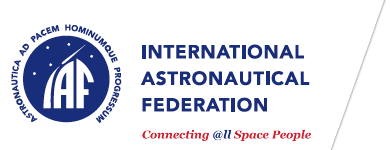Technical programme
IAC-12 — 63rd International Astronautical Congress
E5. 23rd SYMPOSIUM ON SPACE ACTIVITY AND SOCIETY
This 23rd symposium, organised by the International Academy of Astronautics (IAA), will review the impact and benefits of space activities on the quality of life on Earth, including arts and culture, society's expectations from space, life in space, as well as technology and knowledge transfer.
- Coordinator
Geoffrey Languedoc
Canadian Aeronautics & Space Institute (CASI) — CanadaOlga Bannova
University of Houston — United States
E5.1. Space Technologies - Earth Applications
This session will feature stories regarding technologies from space programs that have, or can, transform and shape our future. This will be based on diverse perspectives regarding the benefits of technology transfer. Sources that validate space technology being applied to new products and activities that highlight the facts. Innovators, entrepreneurs and programme managers will be presented.
- Chairman
Kevin Cook
Space Foundation — United StatesNona Cheeks
Retired NASA — United States
- Rapporteur
A. Scott Howe
National Aeronautics and Space Administration (NASA), Jet Propulsion Laboratory — United States
E5.2. Moon, Mars and Beyond: Analogues, Habitation and Spin-Offs
This session will explore the design of habitats and habitable structures for analogue environments and extra-terrestrial planetary surfaces, includung spin-offs for terrestrial applications.
- Chairman
Olga Bannova
University of Houston — United StatesNona Cheeks
Retired NASA — United States
- Rapporteur
Anna Barbara Imhof
Liquifer Systems Group (LSG) — Austria
E5.3. Human Habitation Beyond Low Earth Orbit
The session welcomes papers on all aspects of the challenges of emplacing, sustaining, and growing accommodations for human habitation at diverse inner solar system destinations: high earth orbits, Lagrange points, planetary orbits, the Moon's surface, Near Earth Objects, the moons of Mars, Mars' surface, and free space. These places share characteristics of the need for basic protection from radiation, vacuum, and thermal conditions in space, but vary widely in their remoteness, proximity to natural bodies and resources, and socio-psychological impact. Their needs for architectural solutions, including pressurised volume, shielding, life support techniques, food production, transportation access, and social accommodation will stretch concepts and technologies for space architecture.
- Chairman
Brent Sherwood
— United StatesOlga Bannova
University of Houston — United States
- Rapporteur
Anna Barbara Imhof
Liquifer Systems Group (LSG) — Austria
E5.4. Space as an Artistic Medium
Since the late 70s and early 80s a small group of artists has been exploring the potential of outer space as a medium for art. The application of space technology, materials, and data, coupled with an artistic vision, has created an art that is highly innovative and far removed from mainstream dictums. Examples of this new artistic genre centred on Interstellar Message Composition, Music, Dance in weightlessness, Vacuum Deposition, Artificial Auroras, Orbital Debris, Water Management, War and Peace, Earth-Imaging, GPS, and the Internet. This session will address the work of contemporary artists who have developed new ways to appropriate space as an artistic medium. Current and future applications of this aesthetic paradigm for space will be examined.
- Chairman
Richard Clar
Art Technologies — United StatesTim Otto Roth
Imachination Projects — Germany
- Rapporteur
Regina Peldszus
European External Action Service — Belgium
E5.5A. Part 1: The Role of Art in Space Activities
This session will explore the role that art can play on extended space missions and culture can enrich space programmes.
- Chairman
Richard Clar
Art Technologies — United StatesTim Otto Roth
Imachination Projects — Germany
- Rapporteur
Regina Peldszus
European External Action Service — Belgium
E5.5B. Part 2: Space Assets and Disaster Management
This session will explore the role that art can play on extended space missions and culture can enrich space programmes.
- Chairman
Peter Swan
Space Elevator Development Corporation — United StatesGeoffrey Languedoc
Canadian Aeronautics & Space Institute (CASI) — Canada
- Rapporteur
Natasha Jackson
Faculty of Engineering, Carleton University — Canada
